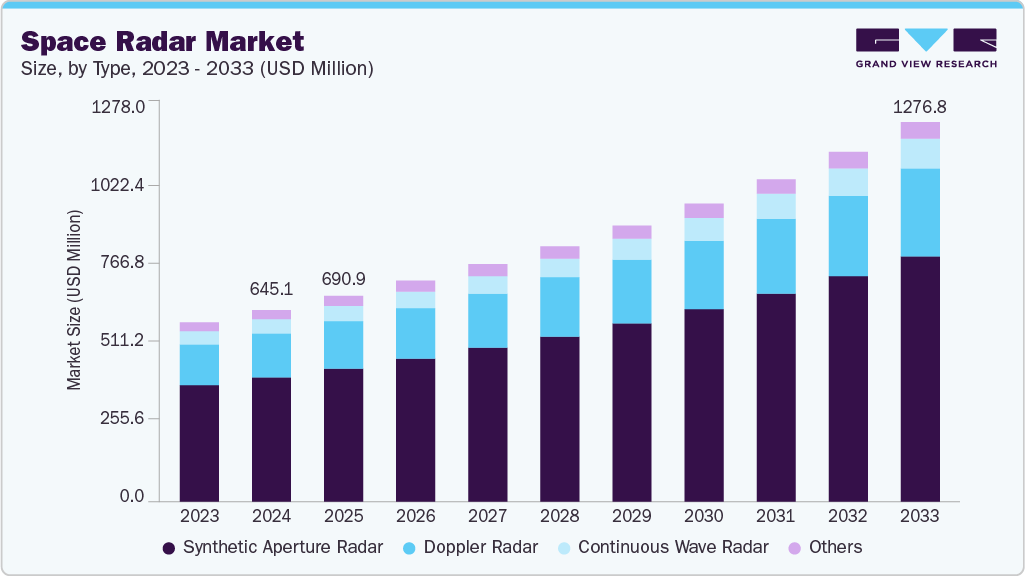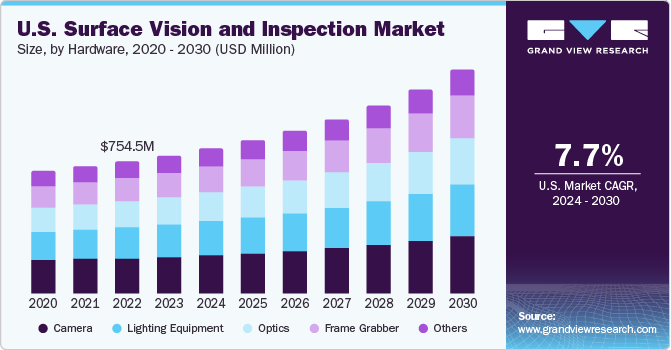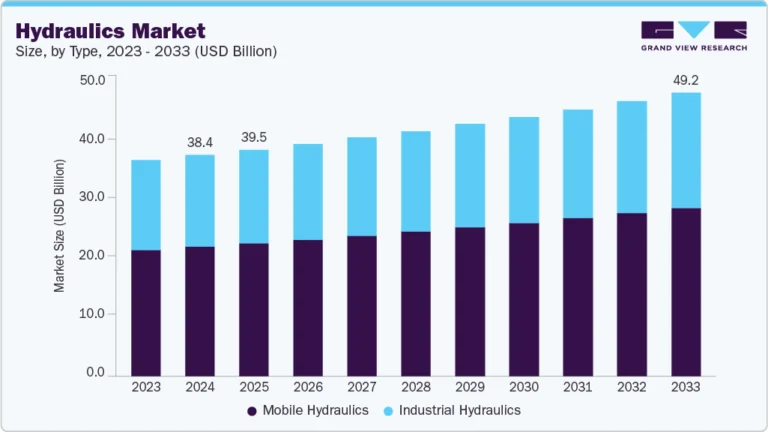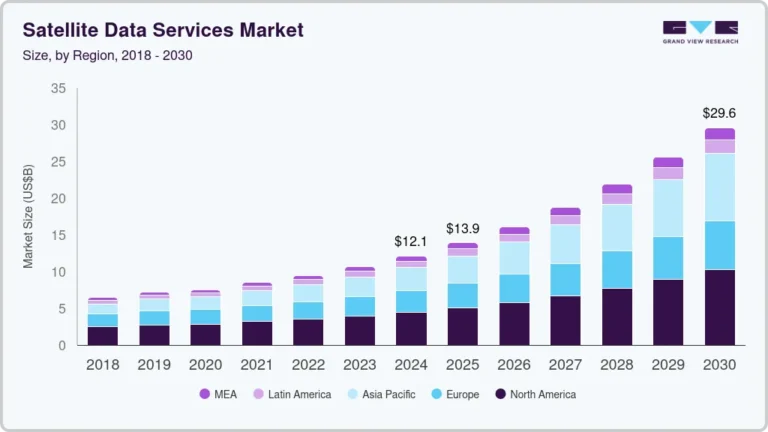Space Radar Market Size, Share & Trends Analysis growing at a CAGR of 8.3% from 2025 to 2033

The global space radar market size was estimated at USD 645.1 million in 2024 and is projected to reach USD 1276.8 million by 2033, growing at a CAGR of 8.3% from 2025 to 2033. The market growth is primarily driven by increasing demand for high-resolution earth observation data, environmental monitoring requirements, and real-time situational awareness, which space radar systems can provide with greater accuracy and all-weather, day-night imaging capabilities.
Key Market Trends & Insights
- North America dominated the global space radar market with the largest market share of 40.9 % in 2024.
- The space radar market in the U.S. led the North America market and held the largest revenue share in 2024.
- By type, synthetic aperture radar segment led the market, holding the largest revenue share of 65.0% in 2024.
- By platform, satellite-based segment held the dominant position in the market and accounted for the leading revenue share of 69.7% in 2024.
- By application, earth observation segment is expected to grow at the largest market share of 41.5% from 2025 to 2033.
Market Size & Forecast
- 2024 Market Size: USD 645.1 Million
- 2033 Projected Market Size: USD 1276.8 Million
- CAGR (2025-2033): 8.3%
- North America: Largest market in 2024
Request a free sample copy or view report summary: https://www.grandviewresearch.com/industry-analysis/space-radar-market-report/request/rs1
The growing need for advanced Earth observation and situational awareness is driving demand in the space radar market. Traditional optical imaging systems are often limited by weather conditions and daylight availability, which has led to increased investment in radar-based satellite systems that offer all-weather, day-and-night imaging capabilities. Governments and private space agencies are increasingly adopting space radar technology to enhance national security and monitor climate change. The rising geopolitical tensions and the global emphasis on space-based reconnaissance are further accelerating funding for space radar programs, reinforcing the market’s upward trajectory.
The increasing role of space radar in climate change monitoring and sustainability efforts is also propelling market growth. Space radar systems are being deployed to track deforestation, ice sheet dynamics, ocean wave patterns, and greenhouse gas levels. Synthetic aperture radar (SAR) data can capture subtle terrain deformations and vegetation density changes, which are crucial for long-term climate modeling and carbon accounting. This aligning with environmental goals establishes the space radar industry as a crucial resource for supporting global sustainability efforts, thereby unlocking new government and commercial funding opportunities.
Additionally, advancements in satellite launch technology enable the deployment of compact radar satellites, fueling a new era of cost-effective space radar networks. The evolution of small satellite platforms combined with reusable launch vehicles significantly reduces the cost of putting SAR systems into orbit. Emerging players are leveraging low-cost SAR satellites for applications such as maritime tracking, infrastructure monitoring, and urban planning. These developments are expanding the space radar customer base and diversifying use cases, thereby creating sustained momentum in the market.
Furthermore, increased defense spending and the need for advanced intelligence, surveillance, and reconnaissance (ISR) capabilities are driving adoption in the military segment. Governments are investing in space radar programs to support mission-critical operations, detect enemy movement, and monitor conflict zones. Integration of space radar with AI-powered analytics further enhances threat detection and response capabilities. Geopolitical tensions rise and defense modernization programs continue globally, demand for sophisticated radar-based ISR systems will remain a key growth pillar in the space radar market.
Type Insights
The synthetic aperture radar segment dominated the market with a share of over 65.0% in 2024, driven by its unparalleled ability to provide high-resolution imaging in all-weather and day-night conditions. The increasing use of SAR by government and defense agencies for border security, intelligence gathering, and maritime monitoring further boosts its demand. The spread of small satellite constellations equipped with SAR payloads, along with falling launch costs, has made high-frequency radar imaging more accessible and affordable. These developments, combined with the growing integration of AI and machine learning for automated SAR data analysis, are key factors driving the segment’s ongoing dominance.





